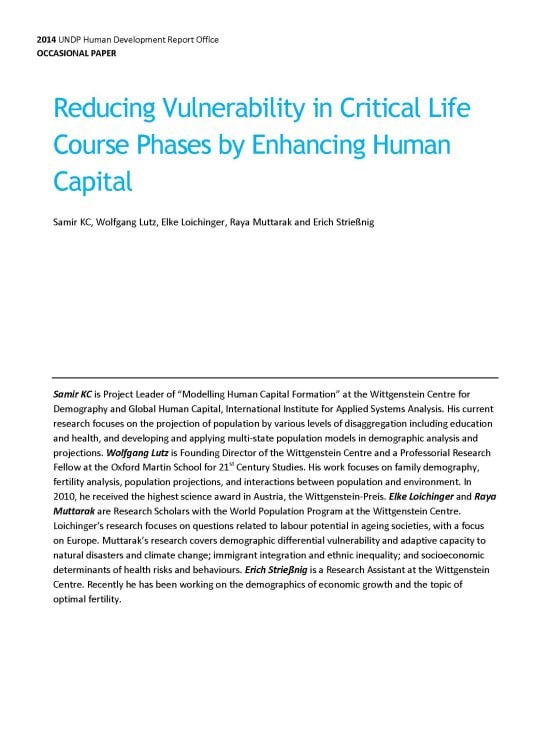Reducing Vulnerability in Critical Life Course Phases by Enhancing Human Capital

Samir KC, Wolfgang Lutz, Elke Loichinger, Raya Muttarak and Erich Strießnig. 2014. Reducing Vulnerability in Critical Life Course Phases by Enhancing Human Capital . New York.
Reducing Vulnerability in Critical Life Course Phases by Enhancing Human Capital
This paper takes a demographic perspective and addresses differential vulnerability for men and women as they pass through their life cycles. A particular focus lies on differential vulnerability by level of education. The analysis starts with a global view on infant and child mortality and presents evidence that mothers’ education is a key to reducing such mortality. Scenarios are presented that show how many millions of child deaths could be avoided in the longer run by more investments in female education in the near future. Next the paper addresses the transition from education to employment and shows that education is a key determinant in reducing youth unemployment. Proceeding further in the life course, it demonstrates that vulnerability to becoming disabled in the age group 30-74 declines strongly with education level. Finally, the last section studies differential vulnerability at the national level using time series data on deaths from disasters where the aggregate levels of education are taken into account. The paper concludes that over the entire life cycle of individuals, changes in behaviour that tend to be associated with more education (of mothers or the persons themselves) can be viewed as a potent factor in reducing child mortality, lowering the risk for unemployment at a young age, decreasing vulnerability to natural disasters, and finally limited the risk of falling into disability. These general long-term benefits of near-term investments in education hold for individuals as well as entire societies.